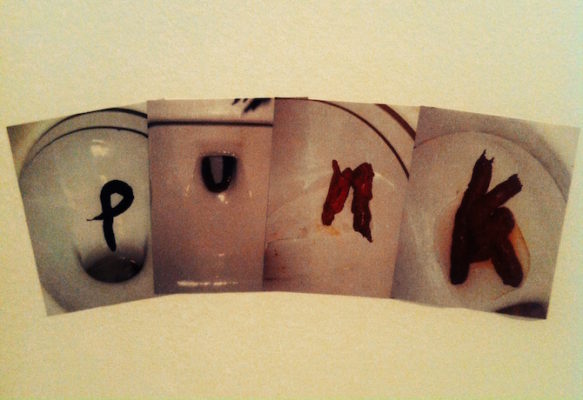Search
To search for an exact match, type the word or phrase you want in quotation marks.
A*DESK has been offering since 2002 contents about criticism and contemporary art. A*DESK has become consolidated thanks to all those who have believed in the project, all those who have followed us, debating, participating and collaborating. Many people have collaborated with A*DESK, and continue to do so. Their efforts, knowledge and belief in the project are what make it grow internationally. At A*DESK we have also generated work for over one hundred professionals in culture, from small collaborations with reviews and classes, to more prolonged and intense collaborations.
At A*DESK we believe in the need for free and universal access to culture and knowledge. We want to carry on being independent, remaining open to more ideas and opinions. If you believe in A*DESK, we need your backing to be able to continue. You can now participate in the project by supporting it. You can choose how much you want to contribute to the project.
You can decide how much you want to bring to the project.

The CA2M has just inaugurated PUNK. Its Traces in Contemporary Art, an exhibition based on the influence punk has supposed for a series of artists, from before it had even erupted to the present day. David G. Torres is the curator of this show and his proposal evades categorisations or periodic tables of something as real but as unclassifiable as punk, of what it is and what it will be.
What PUNK. Its Traces in Contemporary Art proposes is not just another dull exhibition in which a movement is dissected and castrated. It’s no death certificate, basically because what is talked about here is an attitude. Basically, because here there is no corpse to be buried. The show is articulated around an omnipresent figure, that of Greil Marcus, author of the celebrated Lipstick Traces from where G. Torres has also taken the title as well as a series of key points that compose the bulk of the discourse. Greil Marcus also takes part in the catalogue by way of an interview by G. Torres and Glòria Guso.
It’s interesting the role the curator has adopted in getting this exhibition off the ground, placing in doubt in his text, which opens the catalogue, a question all of us who feel close to punk think about every time someone seeks a way to unify everything relating to this movement. One should be grateful that he himself accepts the gesture could be branded as treason, despite being at the hands of someone whose principle interest is quite the opposite.
In this way, what G. Torres has endeavoured to do, and the way I understood it as I moved through the rooms, is to take a historical period already defined by the punk movement and what has surrounded it during almost half a century, to gather around it a considerable group of artists who aren’t characterised for parodying it, so much as for working with proposals that could be included within this movement or have been directly active within it. To clarify, the endeavour is not to spike up one’s hair and shout anarchy, so much as working with an attitude that accompanies us for better or worse.
On entering the centre we find in the hall a car parked, which bears a large luminous sign by Jordi Colomer with the slogan no future, until it creates a message of hope. The desire to end everything has given way to a greater understanding of what is at hand. Punk publishes records, books, organises concerts, projections and lectures, and takes decisions on a political level. Spaces are occupied with social aims, the mistreatment of animals and their consumption are rejected, or slogans are established that, as in the case of Colomer or the NO of Santiago Sierra, work for a better future, always through protest and direct action.
The exhibition includes large pieces by artists such as Martin Kippenberger, Jean-Michel Basquiat, Jonathan Meese, a large installation by Paul McCarthy and the metallic cube by João Onofre inside which rest the musical instruments of Avulsed, the heavy metal band from Madrid that during the opening performed for the Portuguese artist. As well as the big names, we find a series of definitive details that stand out for their attitude. Works that could be branded as uncomfortable like the records of peeing by Itziar Okariz, the clumsy, cutting animations by María Pratts, the photographs of shit by the Austrian group Gelitin, the video by Raisa Maudit where she tells us who well things are going for her, the interventions on comics by Antoni Hervás or the explicit images by Kendell Geers. It also leaves already legendary pieces by artists such as Valie Export, Chris Burden, Dan Graham, Mike Kelley, Matt Mullican and Raymond Pettibon. Without them it’s probable that an exhibition about punk wouldn’t reach a safe harbour. In this G. Torres has trod on firm ground.
To portraits like those of Jimmie Durham, Jordi Mitjà or Nan Goldin, with evident signs of violence, could be added undoubtedly this dialogue maintained by Kippenberger with youth. In any case lets not forget that it’s something that occurred in the eighties and still occurs now. Without looking any further, in 2008 the Scottish band Exploited was beaten up moments before beginning their concert and on the very day on which I write these lines, a central space in Madrid has suspended a punk festival for considering it violent. With this I endeavour to highlight the persistence of a way of life that is far from going out of date, so much as continues to exist on the margins of labels and canned gestures. In the same way many of the artists in this exhibition continue to work in this field that undoubtedly falls within this posture.
I celebrate the work of Pepo Salazar, Iñaki Garmendia, Mario Espliego, Claire Fontaine, Eulalia Grau, Martín Rico, María Pratts, Juan Pérez Agirregoikoa and Joan Morey because I understand it solely by way of this attitude to which G. Torres alludes. I also celebrate works such as those of João Louro, Douglas Gordon, Matt Mullican or Hans-Peter Feldmann, in considering them inheritors of something that in some way has been swept along by this current.
I celebrate this exhibition because undoubtedly to see punk as a movement assimilated by record companies or by the fashion industry is to only go halfway and here I’ve found no trace of this. The show breathes autonomously, devoid of pieces that repeat clichés until they lose meaning. Reference is made to bands such as the Dead Kennedys and to the mimicry of Jello Biafra throwing bombs from the stage. The Damned, Bad Brains, Eskorbuto, Fugazi, Kortatu or the Circle Jerks are discussed. Black Flag, the Angry Brigade or even Agnostic Front and Murphy’s Law are talked about in the text Eloy Ferández Porta has prepared for the catalogue. Sham 69 are mentioned as well as the long life Glòria Guso diagnoses for punk in tight communion with the internett and social networks. Iván López Munuera who after his exhibition Pop Politics exhibition for the CA2M has a lot to say also participates and the Buzzcocks are also mentioned, who published themselves when the record companies were dividing up the cake.
One just has to cast an eye at the concerts with overtones of the term punk organised every week in the city or attend a flea-market one Sunday and discover how, though the years pass, fanzines, records and books are still published outwith the large distributors. For this one is grateful that a figure like Servando Rocha has been invited to take part with a text, in which notes a special involvement. His is the story of someone who from within has known how to establish connections and lend form to a story, one of course tied to the art of the twentieth century. I missed the word CRASS within his text, but it’s never too late to reread Tienen una bomba, the already discontinued book published by La Felguera under the title Textos, declaracions i art de la banda més perillosa del Regne Unit.
I celebrate this exhibition because it could be quite different. For it doesn’t adhere to a rigid script. It talks of Johnny Rotten grinding his teeth, and I understand that this is the sound that resounds through the visit. The art here doesn’t illustrate the history of punk so much as forms part of it. It lances into the air the same question that Rotten threw out in San Francisco, ever felt cheated?

Ángel Calvo Ulloa was born in a very small place full of vile characters. In the faculty where he studied nobody ever talked to him about criticism or curating, so now he dedicates his time to reading, writing and every now and again doing the odd exhibition. He loves travelling and feeling very small in a large city. He also loves going back home and once again hating this tiny place.
"A desk is a dangerous place from which to watch the world" (John Le Carré)